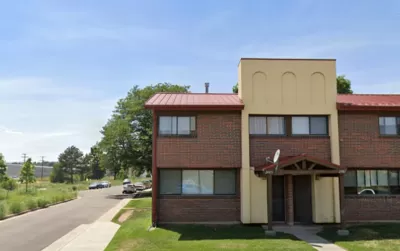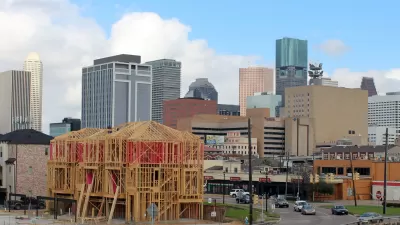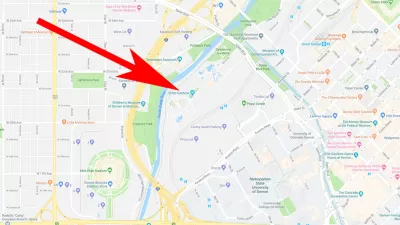One Denver neighborhood’s massive redevelopment project includes a branding element. Is it necessary?

Place branding, while controversial, is nothing new. Cities and neighborhoods frequently employ branding and marketing strategies to stimulate their economy, attract visitors and businesses, and generally boost their profile. Writing in Fast Company, Elissaveta M. Brandon describes the rebranding process occurring in one Denver neighborhood, questioning the utility of the project.
Denver’s Sun Valley, a formerly industrial zone, declined as the are was increasingly cut off from the rest of the city by railroads and freeways. “In 2010, about 27 homes remained, and five of them were vacant. Nearly 80% of Sun Valley residents lived below the poverty line.” Then, the Denver Housing Authority (DHA) “set out to redevelop the neighborhood by demolishing the almost hundred-year-old housing projects, building new subsidized and free-market housing units, and investing in a public park, a community garden, a community-operated supermarket, a job training center—and a visual identity for the renewed neighborhood.”
But the project came at a cost, which included displacing the 1,000 residents who lived in the apartments slated for demolition. As of May of this year, only 20 percent of former residents have returned to the neighborhood. “The residents have gained better housing and better public amenities, but according to Collective Colorado, they have lost the tight-knit community they had built.”
As for the branding aspect, the vision created by design firm Wunder Werkz, inspired by the cultural diversity of the neighborhood, is still a work in progress. “Wunder Werkz has essentially created an easy-to-use, flexible kit of parts with a clear hierarchy and set of rules that the community can reference and use when construction is complete, or whenever they need it.”
FULL STORY: One of Denver’s poorest neighborhood got a rebrand. Did it need it?

Study: Maui’s Plan to Convert Vacation Rentals to Long-Term Housing Could Cause Nearly $1 Billion Economic Loss
The plan would reduce visitor accommodation by 25,% resulting in 1,900 jobs lost.

North Texas Transit Leaders Tout Benefits of TOD for Growing Region
At a summit focused on transit-oriented development, policymakers discussed how North Texas’ expanded light rail system can serve as a tool for economic growth.

Using Old Oil and Gas Wells for Green Energy Storage
Penn State researchers have found that repurposing abandoned oil and gas wells for geothermal-assisted compressed-air energy storage can boost efficiency, reduce environmental risks, and support clean energy and job transitions.

Santa Barbara Could Build Housing on County Land
County supervisors moved forward a proposal to build workforce housing on two county-owned parcels.

San Mateo Formally Opposes Freeway Project
The city council will send a letter to Caltrans urging the agency to reconsider a plan to expand the 101 through the city of San Mateo.

A Bronx Community Fights to Have its Voice Heard
After organizing and giving input for decades, the community around the Kingsbridge Armory might actually see it redeveloped — and they want to continue to have a say in how it goes.
Urban Design for Planners 1: Software Tools
This six-course series explores essential urban design concepts using open source software and equips planners with the tools they need to participate fully in the urban design process.
Planning for Universal Design
Learn the tools for implementing Universal Design in planning regulations.
Ascent Environmental
Borough of Carlisle
Institute for Housing and Urban Development Studies (IHS)
City of Grandview
Harvard GSD Executive Education
Toledo-Lucas County Plan Commissions
Salt Lake City
NYU Wagner Graduate School of Public Service




























